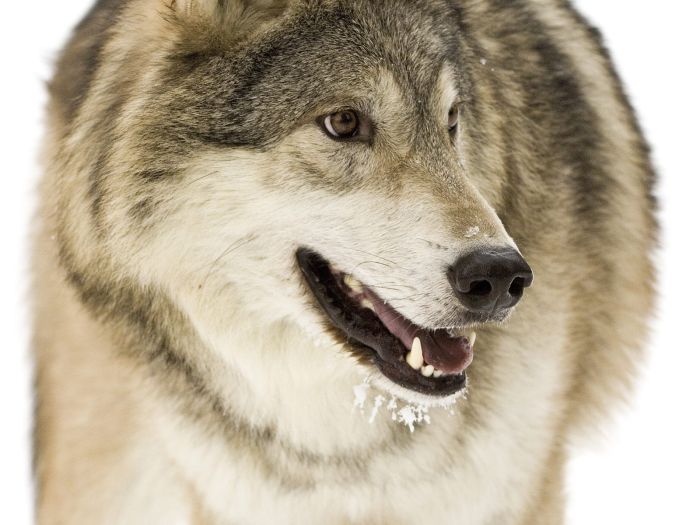|
|
Gray Wolf
|
Although dogs are the most closely related canids to gray wolves (the sequence divergence between gray wolves and dogs is only 1.8%, as opposed to over 4% between gray wolves, Ethiopian wolves and coyotes), there are a number of physical and behavioural differences. Comparative studies on dog and wolf behaviour and anatomy have shown that dog physiology and most dog behaviours are comparable to those of young wolves, an example of neoteny and pedomorphism.
The tympanic bullae are large, convex and almost spherical in wolves, in contrast to dogs whose bullae are smaller, compressed and slightly crumpled. Compared to equally sized dogs, wolves tend to have 20% larger skulls and 10% bigger brains. The reduction lies in the parts of the brain that deal with sense impressions. The teeth of wolves are also proportionately larger than those of dogs; premolars and molars of wolves are much less crowded, and have more complex cusp patterns. Dogs lack a pre-caudal gland, and enter estrus twice yearly, unlike wolves which only do so once annually.
The forelegs of wolves are closer to each other than those of dogs, with the former's tracks being further apart. Their tails hang straight or in a slight curve toward the body when neutral, whereas dogs carry their tails in a slight curl. Wolf paws are generally larger than dog paws, though it is almost impossible to distinguish similarly sized wolf and dog prints with certainty, though most dogs tend to have rounder paw prints than wolves.
|
|









